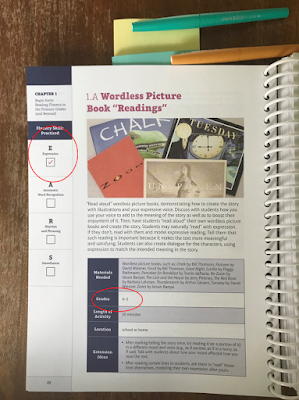Maria and I have shared our thoughts on the professional read Responsive Literacy: A Comprehensive Framework. We have also had the opportunity to review The Megabook of Fluency by Timothy Rasinski and Melissa Smith. And I will just go ahead and admit it...I was a little nervous about writing a post about fluency lessons/interventions. In recent years, fluency has had a pretty bad rap because of assessments that just analyze rate. That has forced fluency to take on a meaning of speed versus a multi-dimensional word.
But luckily, the authors address this misconception IMMEDIATELY. Fluency is multi-dimensional and includes the following components:
- Expression which includes prosody, intonation, tone, stress
- Automatic word recognition which includes pace or rate
- Rhythm and Phrasing which includes pausing
- Smoothness which includes accuracy and ability to self correct
It is mentioned that expressive reading is hard to measure. Everyone probably hears something a little different. Due to this, it is often missing from our instruction of fluency. This point really stuck out to me. Just because we can't assess it (or it is difficult to), doesn't make it less important.
 Rasinski and Smith recommend using "effective, engaging, and authentic [fluency instruction] methods that build word recognition automaticity (not speed) and prosodic or expressive reading." Due to this need, the rest of the book (literally 300 pages) is full of lessons to support effective fluency instruction. There are lessonS for each of the following categories:
Rasinski and Smith recommend using "effective, engaging, and authentic [fluency instruction] methods that build word recognition automaticity (not speed) and prosodic or expressive reading." Due to this need, the rest of the book (literally 300 pages) is full of lessons to support effective fluency instruction. There are lessonS for each of the following categories:
Begin Early: Fluency in Primary Grades
Expressive Fluency
Fluency Fun: poems, songs, chants
Social Fluency
Partner Texts
Famous Quotes
Environment
Family Involvement
First off...can I just say teaching fluency with wordless books! Yes!! I'll be honest. I never thought of that. But I can see it now because it ties right into language!
 I love that the lesson highlights (on the left) exactly what fluency skill is being practiced. I can see this being helpful to me when I am really looking for a lesson that will hit a specific need for a student. Sometimes they just need a "little something" to bring the point home. I also liked that each lesson highlights the grade band that it would work best for. It is a large band. But it still provides me with an idea of when a student should be participating in that type of instruction.
I love that the lesson highlights (on the left) exactly what fluency skill is being practiced. I can see this being helpful to me when I am really looking for a lesson that will hit a specific need for a student. Sometimes they just need a "little something" to bring the point home. I also liked that each lesson highlights the grade band that it would work best for. It is a large band. But it still provides me with an idea of when a student should be participating in that type of instruction.Here is an example of another lesson You can see that all the fluency skills are checked off for this lesson. This lesson provides an example of something else I really liked about this book...the materials. "Jump-Rope Chants" does provide a book idea for you to purchase but behind this lesson are jump rope chants that you can use right away with your students.
Thank you!
Overall, I was happy to see the authors of this book addressing the negative tones that have surrounded fluency. It is an important skill but it entails so much more than speed and word counting. And these lessons certainly hit upon all aspects of fluency instruction.
Check back for a giveaway!


Fascinating! I am eager to get my own copy of this book!!
ReplyDeleteAlyce